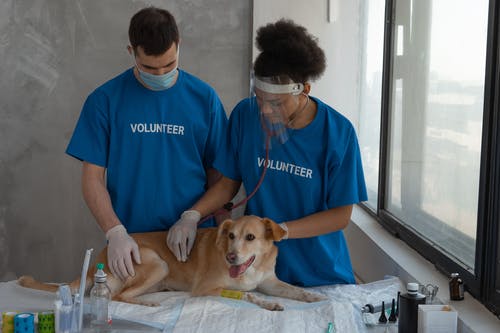
Anemia can establish in dogs, as in humans, when the body falls short of developing enough red blood cells or hemoglobin or when the dog has a substantial loss of blood due to an injury, an accident, or a condition such as stomach ulcers or cancer.
What is anemia in dogs?
When your dog’s body stops working to create adequate hemoglobin or red blood cells, which carry oxygen to the tissues, anemia is usually an underlying problem. When cells transform food into energy, they discharge carbon dioxide, which breathing removes from the body. Nonetheless, inadequate oxygen transport brought on by a lack of red blood cells creates exhaustion and weakness.
Signs of Anemia in Dogs
As a fur parent, you must know the warning signs of anemia. Understanding this can aid you in deciding when it’s time to bring up your dog’s signs with the vet and give you a better understanding of the treatment choices a vet might provide. Furthermore, the signs and signs of canine anemia include the info provided below.
Pale Gums
Pallor is a constant symptom of anemia in humans, but it isn’t easy to find in dogs because of their coats. Dogs with anemia, on the other hand, frequently present pale gums. Checking the dog’s gums is an excellent initial action if you suspect anemia. Pink bubblegum is a standard color for a dog’s gums if they are in good health. A mix of melanin and superficial blood circulation develops this gum color.
Indicators of possible difficulties with oxygenation, perfusion, and red cell counts, such as pale, blue, or grey gums, demand a journey to the emergency vet with pet blood transfusion services. Dogs with pale gums may struggle with anemia, dehydration, intestinal bloodsuckers, heartworms, or cardiac issues.
Difficulty in Breathing
Breathing problem is a significant medical emergency. While it’s not always linked to anemia, extreme anemia in dogs is widespread. It matters not what you believe might be the cause; if your dog has trouble breathing, you must instantly take them to the emergency vet. The emergency vet will be able to help you figure out what’s going on and provide you with info to pass along to your dog’s regular vet. Click here to find a skilled and experienced vet for your pet’s well-being if you are looking for one.
Loss of Appetite
When dealing with anemia, animals regularly drop their appetite. Some canines are inclined to acquire a considerable aversion to food. A loss of appetite is a general symptom that can be brought on by different conditions, varying from problems with digestion to diseases affecting other organs.
Countless vets will advise bloodwork to rule out the possibility of anemia in a dog that usually has been eating but has suddenly developed an unexplained loss of appetite.
Blood in Feces, Vomit, and Urine
Blood can be discovered in anemic dogs’ feces, vomit, and urine. This blood could appear like dark red blood mingled with the bodily fluids or like blood clots dispersed among the fluids. In any case, it suggests severe anemia that needs to be addressed medically. If you observe this symptom, you must get your pet to an emergency veterinarian from an animal clinic like Upland veterinary clinic.
Bottomline
Anemia is a problem that can represent an early indication of more severe disease, such as cancer. You and your vet can reach the proper diagnosis for the condition your pet is experiencing and choose a treatment plan for it if you work together.

 Understanding the Benefits and Risks of Artificial Insemination in Pets
Understanding the Benefits and Risks of Artificial Insemination in Pets  What Should I Look for in a Trustworthy Veterinarian?
What Should I Look for in a Trustworthy Veterinarian?  What Are the Common Eye Conditions in Pets and How Are They Treated?
What Are the Common Eye Conditions in Pets and How Are They Treated?  A Comprehensive Walkthrough of Common Veterinary Surgeries
A Comprehensive Walkthrough of Common Veterinary Surgeries  Why Regular Vet Visits and Diagnostics Keep Pets Healthy
Why Regular Vet Visits and Diagnostics Keep Pets Healthy  Spotting the Signs: When to Take Your Pet to the Hospital
Spotting the Signs: When to Take Your Pet to the Hospital  How to Choose the Right ENT Specialist for Your Needs
How to Choose the Right ENT Specialist for Your Needs